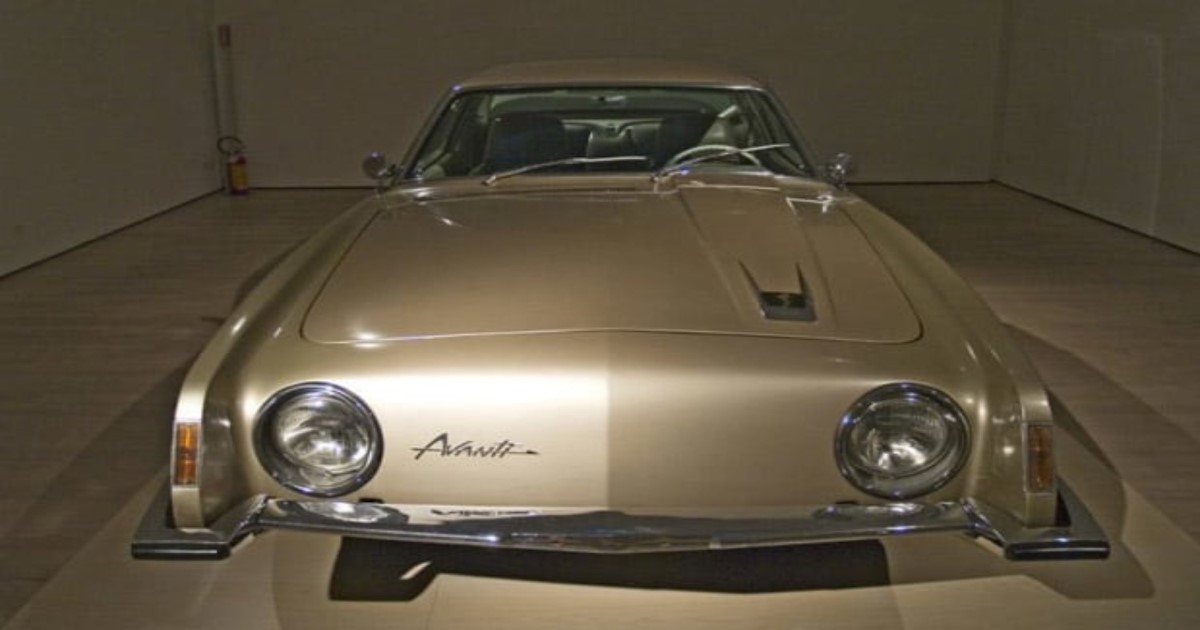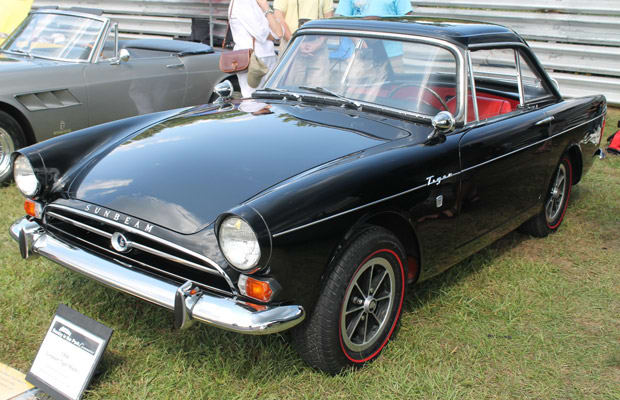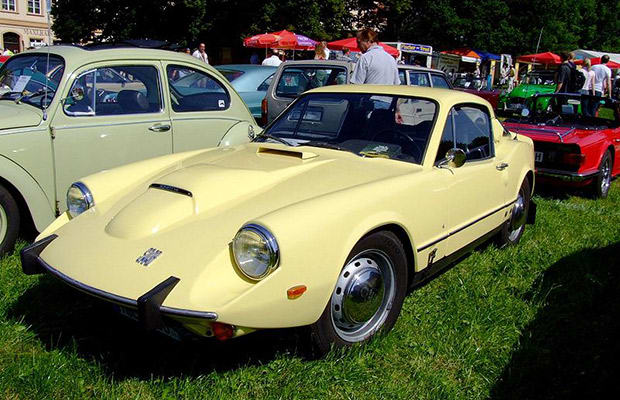25 Classic Cars You Should Know About If You Don't Already
Most people are aware of the more popular classic cars, including the Mustangs, Chargers, and Impalas. These cars have stood the test of time and remain among the most popular at classic car shows. But there are plenty of other gems out there that few people know about. Many of them did not last long or were only built for a couple of years. Each of these truly classic cars come with a story of their own just waiting to be told. Here are twenty-five classic cars any true car lover needs to know about.
1966 Oldsmobile Toronado

Originally created as a design painting by David North in 1962, the 1966 Oldsmobile Toronado was nicknamed the "Flame Red Car." Although the design was never intended for production, it became the first American car with front-wheel drive in thirty years. It had a muscular styling that paired well with its 425 cubic inch V8 engine with 385 horsepower. Even though it weighed over four thousand pounds, it reached top speeds of one hundred and twenty miles per hour.
1969 Mercury Cyclone Spoiler II

As a more aerodynamic version of the Mercury Cyclone, the 1969 Mercury Cyclone Spoiler II was a unique car built for the purpose of making it more competitive in NASCAR races. Due to homologation rules, five hundred models were produced and sold to the general public. It came available in two trims. The Cale Yarborough Special was a white trim car with red exterior trim and interior coloring, while the Dan Gurney Special was white with blue interior and trim.
1958 Buick Caballero Station Wagon

As one of the rarest and most beautiful station wagons ever produced, the 1958 Buick Caballero Station Wagon is a head turner that represents a much simpler time. The all-steel station wagon was only built during the years of 1957-1958 and rocked a pillarless hardtop, which is less rigid than a pillared roof. It required extra strength underneath the roof to prevent it from shaking. It also had a 264 cubic inch engine with 300 horsepower.
1969 Dodge Coronet Super Bee 426 Hemi

Although the Dodge Coronet has been around since 1949, it was not a real muscle car until the late 1960’s. In 1968, the car received exterior styling updates to reflect a rounder “Coke bottle” look. By 1969, the Coronet got an engine upgrade to a 440 cubic inch V8 with three two-barrel carbs. Dodge referred to it as the 440 Six Pack, which produced 390 horsepower and 490 pounds per foot of torque. This package was only available on the Super Bee. It also had a fresh-air induction system and twin air scoops.
1971 Stutz Blackhawk

Not to be confused with the original Blackhawk produced in 1929-1930, the Stutz Blackhawk was designed by Ghia in Italy. Constructing just one of these handmade cars took around one thousand and five hundred hours. It debuted in New York City at the 1970 Waldorf Astoria. All early models were offered as couples, but rare sedans were produced in later years. The 1971 Blackhawk’s factory price was listed at $22,500. When adjusted for inflation, that comes out to be around $120,000 in 2010.
1957 Panhard Dyna Z

Panhard has been manufacturing cars since 1945. Like Citroen, the brand considered itself a leader in the automotive industry. In 1955, Citroen took out a twenty-five percent holding in Panhard’s business, resulting in expanded market coverage and increased sales. The Panhard Dyna Z was produced from 1954-1959. It was later replaced by the Panhard PL 17. It featured an aluminum body with steel tube subframes and steel plate reinforcements. It had a 2.0 cylinder engine with 50 brake horsepower and only 1,630 pounds.
1969 Marcos 3.0 GT

Although Marcos brand cars were eventually switched to steel, the original chassis was high-grade plywood. The 1969 Marcos 3.0 GT featured a two-door coupe body style with rear-wheel drive and a manual four-speed gearbox. It topped out at one hundred and ninety-three miles per hour and accelerated from zero to sixty in 7.9 seconds. It averaged an estimated 28.9 miles per gallon and was fitted with a double-carb Ford Essex V6 engine along with transmission from the Ford Zodiac.
1965 Rambler Marlin

The Rambler Marlin was an American-made two-door sports car made by American Motors from 1965-1967. It was used as a personal luxury car. On its launch day of February 10th, 1965, it was marketed in approximately two thousand and forty newspapers. As a sporty fastback with both comfort and plenty of interior space, the Rambler Marlin competed with smaller sports cars such as the Mustang and Barracuda that had arrived the year before. It had a V8 engine with 327 horsepower and went from zero to sixty miles per hour in 9.7 seconds. Fuel economy was estimated around 18.14 miles per gallon.
1977 Lancia Scorpion

The 1977 Lancia Scorpion is a bit of a rip-off from the Beta Montecarlo with 120 horsepower that was produced in Europe. When the vehicle was brought to America, it was forced to be dulled down to 81 horsepower due to regulations. It was given bigger five mile per hour bumpers and semi-pop up, sealed beam headlights to meet federal crash test and lighting requirements. Since Chevrolet already had the Monte Carlo name locked down, Lancia had to go with Scorpion.
1965 Plymouth Belvedere II

The American made Belvedere was in production from 1954-1970. It was well known for its new hardtop body style. In 1954, the Belvedere trim replaced the Cranbrook and turned into a full line of station wagons, convertible, and sedan body styles. The 1965 Plymouth Belvedere II had a V8 Hemi with 420 horsepower that even made its way into stock-car and NASCAR races. It reached a top speed of one hundred and twenty miles per hour and accelerated zero to sixty in less than eight seconds.
1959 DeSoto Firedome

After it was debuted in 1952, the DeSoto Firedome became one of the most popular of the year. It was the first DeSoto V8 since 1931 and featured either a two-door convertible or four-door sedan body frames. Although a mechanically sound vehicle with an eye-catching look and color, it is known to be prone to rust. In 1958, the engine grew to 361 cubic inches and 295 horsepower but changed up the exterior with contrasting panels that went up at the rear, causing sales to decline and production to stop.
1951 Buick XP 300

In 1951, there were two new dream cars built. One was the GM LeSabre and the other was the Buick XP 300. Both cars shared many of the same features, including a supercharged V8 engine, power jacks that could be operated by the driver, and push-button windows and seats. They were dramatically different on the outside with the XP300 having a much wider and longer build. Other notable features of the 1951 Buick XP 300 were the presence of tailfins, a third brake light that was shaped like a jet exhaust, and long chrome side pieces.
1962 Studebaker Avanti

Remembered for being one of the most significant milestones of the postwar industry, the Studebaker Avanti was advertised as “America’s only four-passenger high-performance personal car.” In 1962, approximately one thousand and two hundred of these vehicles were produced. It featured a two-door coupe body style with a 289 cubic inch 4.7-liter V8 engine and 240 horsepower. The transmission was available as a three-speed manual, a four-speed manual, or a three-speed automatic.
1967 DeTomaso Mangusta (Ghia)

The 1967 DeTomaso Mangusta was built on the chassis of the Vallelunga model, which is also the vehicle it replaced. As the Italian word for a cobra-killing animal named Mongoose, “Mangusta” may just be Ghia’s way of taking a shot at the Ford Cobra. Between the years of 1967-1971, approximately four hundred and one of these vehicles were built with only a reported two hundred and fifty left in existence. Initial versions of the car had a 289 cubic inch 4.7-liter engine with a five-speed manual transmission.
1970 Cord Warrior

The Sports Automobile Manufacturing Company is credited with resurrecting Cord after it went out of business in the 1930’s, making the Cord Warrior somewhat of a replica. They featured a 108-inch wheelbase and either a Ford 302 engine or a Chrysler 440. Between the years of 1968-1970, only forty of these cars were made, making the two-door convertible one of the most difficult to identify for even the most experienced classic car show junkie.
1956 Buick Centurion

First used on a Buick concept car in 1965, the Centurion featured a red and white fiberglass body with interior designs similar to an airplane. It also has a classic and highly identifiable bubble rooftop. In place of a review mirror, there is a backup camera. It was never intended to be a functional car, only a concept piece. It can currently be found in the Sloan Museum located in Flint, Michigan at the Flint Cultural Center.
1956 Chrysler Norseman Concept

The 1956 Chrysler Norseman Concept was a four-seated fastback designed by Chrysler and constructed by Carozzeria Ghia. Known as the “ghost of the Norseman,” the vehicle was lost at sea along with the lives of fifty-one other people after the SS Andrea Doria collided and sank off the coast of Massachusetts. The beautiful, one of a kind vehicle resembled the 1965 Rambler Marin fastback coupe. It had a notable cantilevered roof design that was never again used in any subsequent vehicle by Chrysler.
1964 Sunbeam Tiger

As a high-performance V8 version of the Sunbeam Alpine roadster, the Sunbeam Tiger was partially designed by American race car driver Carroll Shelby. Two major versions of the vehicle were built. The Mark I was manufactured from 1964-1967 and featured a 260 cubic inch 4.3 liter V8 engine. Only six hundred and thirty-three of the second version, called the Mark II, were made. Production was brought to a halt when Chrysler was taken over by the Rootes Group in 1967, although it did not have a suitable engine for future models.
1969 Saab Sonett II

The Saab Sonett was first manufactured from 1955-1957 and then again from 1966-1974. The Sonett I was the first prototype. It featured a two-seater, lightweight, open-top roadster racer. Ten years later, it evolved into the Sonett II model, which was designed as a race car. Like the Sonett I, it featured a fiberglass body and was bolted to a box-type chassis with a roll bar added to support the hardtop roof. It had a three-cylinder, two-stroke engine with 60 horsepower that went from zero to sixty-two miles per hour in 12.5 seconds and topped out at ninety-three miles per hour. All Sonett II’s were left hand drive vehicles.
1958 GM Firebird III

GM designed and built the Firebird III in 1958 and debuted it in 1959 at Motorama. It featured titanium siding and no less than seven short wings and tail fins. The two-seater has a Whirlfire GT 305 gas turbine engine with a two-cylinder ten horsepower engine and 225 horsepower. Exterior features included cruise control, air conditioning, and anti-lock brakes along with a double-bubble canopy and an automated guidance system to prevent accidents. Reviewers compare driving the 1958 GM Firebird III to be similar to flying an airplane because of the joystick in between the front seats.
1955 Cadillac LaSalle Roadster II

In 1955, two Cadillac LaSalle II cars were displayed at the Motorama shows. The first was a small, hardtop sedan with four doors. The second was a two-seater convertible roadster. A small V6 engine powered both cars. They were also both styled with vertical grille openings, the LaS insignia, and Dagmar bumper guards. The two-seater convertible had concave body side panels located just behind the front wheel openings and a fiberglass body. Neither were intended to be anything more than a show car.
1955 Chevrolet Biscayne XP-37

The 1955 Chevrolet Biscayne XP-37 was featured in the 1955 Motorama show. It had a 265 cubic inch V8 Chevrolet engine with 180 horsepower and a four-barrel carb, which was the same engine that would later be used in Eldorado, Corvair, Riviera, and Corvette. GM described the four-passenger car as an “exploration in elegance.” It had unique swivel front seats that allowed passenger to exit easily as the vehicle sat rather low. Lighters and ashtrays were located between passengers in the front and rear on the driveshaft tunnel.
1974 AMC Javelin AMX

The 1974 AMC Javelin AMX was the product of an automobile marketplace that had changed. Although its debut did not go as well as other cars on the market, the 1974 AMC Javelin AMX was referred to as "smooth and slippery and actually competes with the Javelin for boss muscle-car styling” by Popular Mechanics magazine. It featured a new seatbelt interlock system to prevent the car from starting if the driver and passenger were not buckled in, along with a 401 cubic inch 6.6-liter V8 engine and revised bumpers.
1951 GM LeSabre Concept

Most people have heard of the Buick Lesabre, but are not aware that Harley Earl of GM designed the original concept car. It was credited for introducing aircraft-inspired design elements into the auto world, such as wrap-around tail fins and windshields. The 1951 GM LeSabre Concept featured several advanced features, including heated seats, a twelve volt electrical system, front bumper dagmars, electric lifting jacks, and a water sensor to activate the powered roof top.
1956 Pontiac Club De Mer

Built by Pontiac for the purpose of celebrating General Motors’ commitment to futuristic design, the 1956 Pontiac Club De Mer was a two-door roadster with a sleek profile. Per GM’s “kill order,” the vehicle was supposed to be scrapped after it was unveiled at the General Motors Motorama in 1956; however, the model still exists today. It was owned by Joseph Bortz of Highland Park, Illinois until he sold it to Ron Pratt for seventy-five thousand dollars at the 2007 Barrett-Jackson Classic Car Auction.







